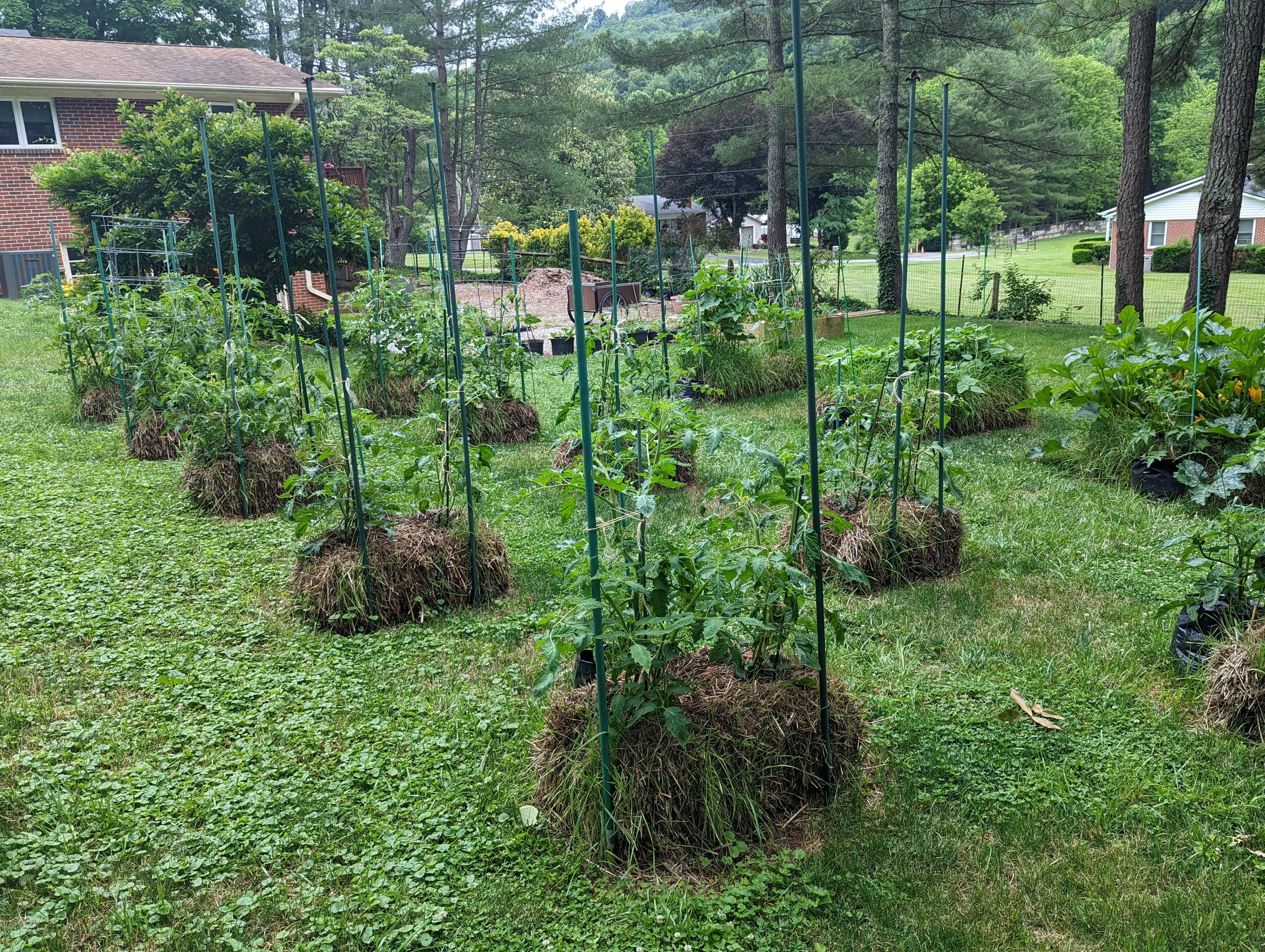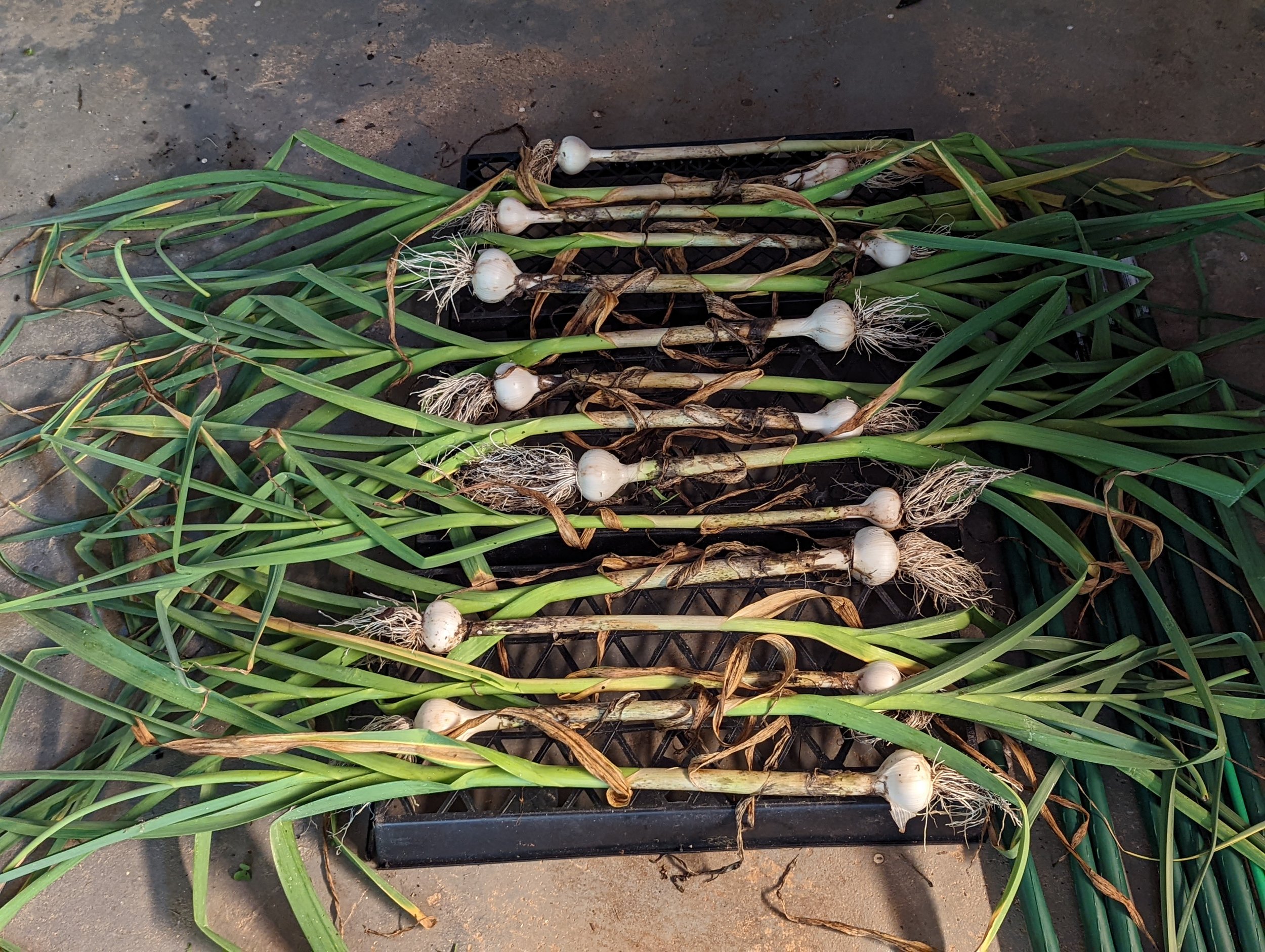It wasn’t colorful, it only had a few pages, but there was a lot of magic in Gleckler’s seed catalogs. I really enjoyed my phone call with the company leader, George Gleckler.
_____________________
The Man Behind the World of Unusual Seeds - An Interview with George Gleckler of Gleckler’s Seedmen
by Craig
The first time that I flipped through a Gleckler’s seed catalog, back in the mid-1980’s, it struck me that my gardens up to that point were much too normal! Not for long, though. That catalog was my entry into life beyond Burpee and Parks, outside of the realm of the dark purple eggplant, green bell pepper and red round tomato. The pages of the unassuming, modest (and free!) catalog printed in green ink on white paper, with the pictures of Peron sprayless tomato and Aconcagua pepper on the front cover, held such wonders as purple artichokes, red carrots, pink celery, white cucumbers, and a rainbow of unique and unusual eggplant, peppers and tomatoes. Some of the first open pollinated vegetables that I tried came from Gleckler’s Seedmen. It was right at that point when I took the plunge headlong into heirlooms and involvement in the Seed Saver’s Exchange. A few weeks ago, when pondering the next OTV interview victim, it seemed like a perfect opportunity to speak with George Gleckler, who currently runs the business in Metamora, Ohio, and ask him some questions about the company, the varieties and his philosophy on gardening.
George and I enjoyed a wide-ranging hour and a half telephone conversation, and covered lots of territory. Mr. Gleckler came across as a man of high ethics who, because of his love for gardening, continues the business of offering the rare and out of the ordinary that his father Merlin started in 1947. Prior to that, Gleckler Sr. was a contract grower for large seed companies such as Burpee. For example, he would grow acres of a particular tomato variety and sell the seed to the large companies. Believe it or not, he would get paid 3 dollars per pound of tomato seed back then in the 1940’s! Due to such underwhelming financial recompense, the logical step from there was to enter the business, which is what he did. One thing to note is that he was not particularly fond of eating tomatoes; however, he did find it a very interesting crop to grow, due to the large visual variation, and in addition, tomatoes were, and still are, perhaps the most widely grown home garden vegetable, resulting in a large and captive audience.
In the 1980, Merlin Gleckler suffered a stroke, after which he understandably lost interest in his seed company. George decided to take over his father’s business, but was dismayed to find that many of the varieties could not be propagated, due to loss of viability of the seed. Eventually, thanks to donations from long time customers, and even some members of the Seed Saver’s Exchange who had been maintaining the varieties (Pink Grapefruit is a good example), George managed to get the majority of the tomatoes and other crops back in good shape, and the company persevered. Interestingly, two tomatoes that were listed years ago but were considered lost are Lutescent and Stick. Both of these were located in the USDA seed repository, and are (or will be next spring, in the case of Stick) available in the Seed Saver’s Exchange collection to members of the organization. When asked about the sources of the various tomato varieties listed in the Gleckler catalog, the response was that, in many cases, various gardeners sent the company their favorites over the years. Others, such as Peron, were bred in Argentina especially for Gleckler, in the 1950’s. It was supposedly bred with wild tomato in its ancestry, leading to its remarkable disease and insect resistance (hence the nickname Sprayless). San Pablo and 506 Bush were also bred there. Gleckler’s grows the vast majority of their tomato seed, which is something that cannot be said for the lion’s share of other seed companies, both large and small.
Many of you are aware, and disappointed, that there was no 1995 Gleckler catalog. You will be happy to know, however, that there will be a new catalog next year. (Gardening enthusiasts should send their catalog request to Gleckler’s Seedmen, Metamora, Ohio, 43540.) Business remains good, but it is more of a hobby for George, as he also works in construction. Gleckler also spends time contract growing seed for such companies as Totally Tomatoes and Tomato Grower’s Supply Company. He takes pride in the purity and quality of the tomato seed that he supplies, and expressed alarm at how unscrupulous some of the other, larger, companies are in terms of substituting varieties without telling the customer, or offering seed that may not be pure, or even fabricating plant variety histories for more colorful catalog descriptions, to increase sales and interest in the variety. Obviously, even the garden seed company is not immune from the weaknesses of people!
We talked about heirloom tomatoes for a while. We did not talk much about the SSE, since George, although he is supportive of the organization, is concerned about the fact that all sorts of gardeners, even inexperienced ones, are offering seeds, which could lead to crossing problems. One of the issues that George brought up was that many heirlooms of different names may be the same tomato. A good example is of the bicolored beefsteaks, such as Georgia Streak, Pineapple, and Marizol Gold. The only way to determine without a doubt if they are different would be to do genetic analysis. Another group of tomatoes he noted as possibly the same are the German pink skinned tomatoes, such as Mortgage Lifter, Watermelon Beefsteak, and Giant Belgium. It makes a lot of sense, actually, when you consider that despite the fact that there are over 3000 named tomatoes in the SSE collection, no more than 250-300 open-pollinated tomatoes have been actually “developed” throughout the years. When asked what his favorite eating tomato is, he replied that he loves the flavor of Evergreen, because it has “real tomato flavor”. I asked him about the tomato Great White, since it just appeared out of the blue in his catalog a few years ago, and no one seems to know the history of it. It turns out that in 1987 or 88, a woman sent George seeds of an orange and a yellow oxheart. George planted all of the seeds of each variety, and in the grow out, one plant of a white beefsteak tomato showed up. George called the woman and asked if there was any way a white tomato could have been sent accidentally, but she replied that she did not grow white tomatoes. So, whether it is a cross or a mutation, what resulted is one of the best white tomatoes around. I asked about specific histories of other famous Gleckler tomatoes, such as Goldie and German Head, but he confessed that he did not know the exact origin of these, repeating that many of these have been sent to him by other avid growers of heirloom tomatoes that are anxious to share their good fortune.
One of the things that interests George is growing out hybrids to get distinctive, stable, open pollinated varieties. The issue of hybrids turned out to be a rather hot topic with him, as he does not see any real need for hybrids outside of the profit that they generate for seed companies and the creators of the varieties. He noted that many gardening magazines and seed company catalogs warn against growing non-hybrids due to the potential for disease problems, but stated that the origin of disease resistance in plants comes from open pollinated varieties. And, these heirlooms have been around quite a long time, which is a testament to their ability to survive. George once grew Big Boy hybrid next to Peron, and found that there was no comparison. Peron was superior to the hybrid in all respects. He also told of the outrageous prices for hybrid seed. Gleckler once carried a hybrid tomato from the 1950’s called Mandarin Cross. The seed, which was developed by and purchased from a Japanese company, cost one thousand eight hundred dollars per pound! And, he said that some of the Japanese hybrid cherry tomato seed costs three to four thousand dollars per pound! To anyone who has noted the enthusiasm with which cherry tomatoes self seed and volunteer, this seems outrageous. And, those volunteer cherry tomatoes are more often than not just as good as the hybrids from which they originated!
Finally, I asked George which tomato is the weirdest that he has seen. His response was at first Green Zebra (not an heirloom, but a fairly recent creation by Tom Wagner of the former Tater Mater seed Company), but then followed with the answer that I expected, Purple Calabash. However, this tomato, which is closely related to wild tomatoes in his opinion, is quite popular with many of his customers, though he considers it as “worthless”! I have not yet grown Purple Calabash, but I suppose that one day it will find a place in my garden. One thing is for sure, though. If you are a tomato enthusiast, please order a catalog from Gleckler’s Seedmen and try some of the wild, weird and wonderful varieties that he offers. And, while you are at it, be sure to try some of his unique eggplant, and peppers, and melons. The gardening community should do all that it can do to ensure that seed companies like this one survive.
________________________
I really admire many of George Gleckler’s opinions - this is the first time I’ve read this interview in a long time. Now I must go through my basement boxes and find my Gleckler catalog collection!

























